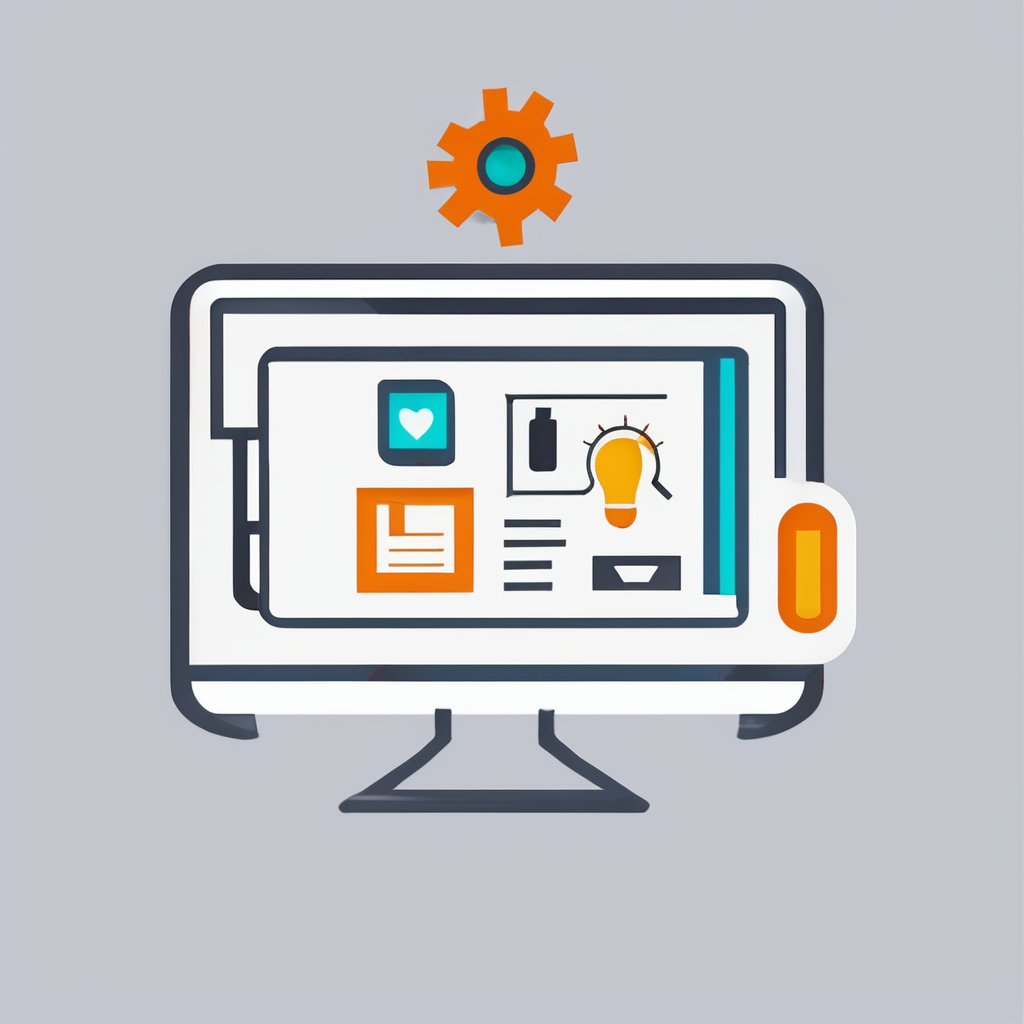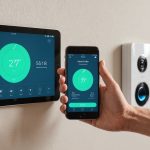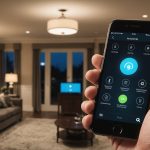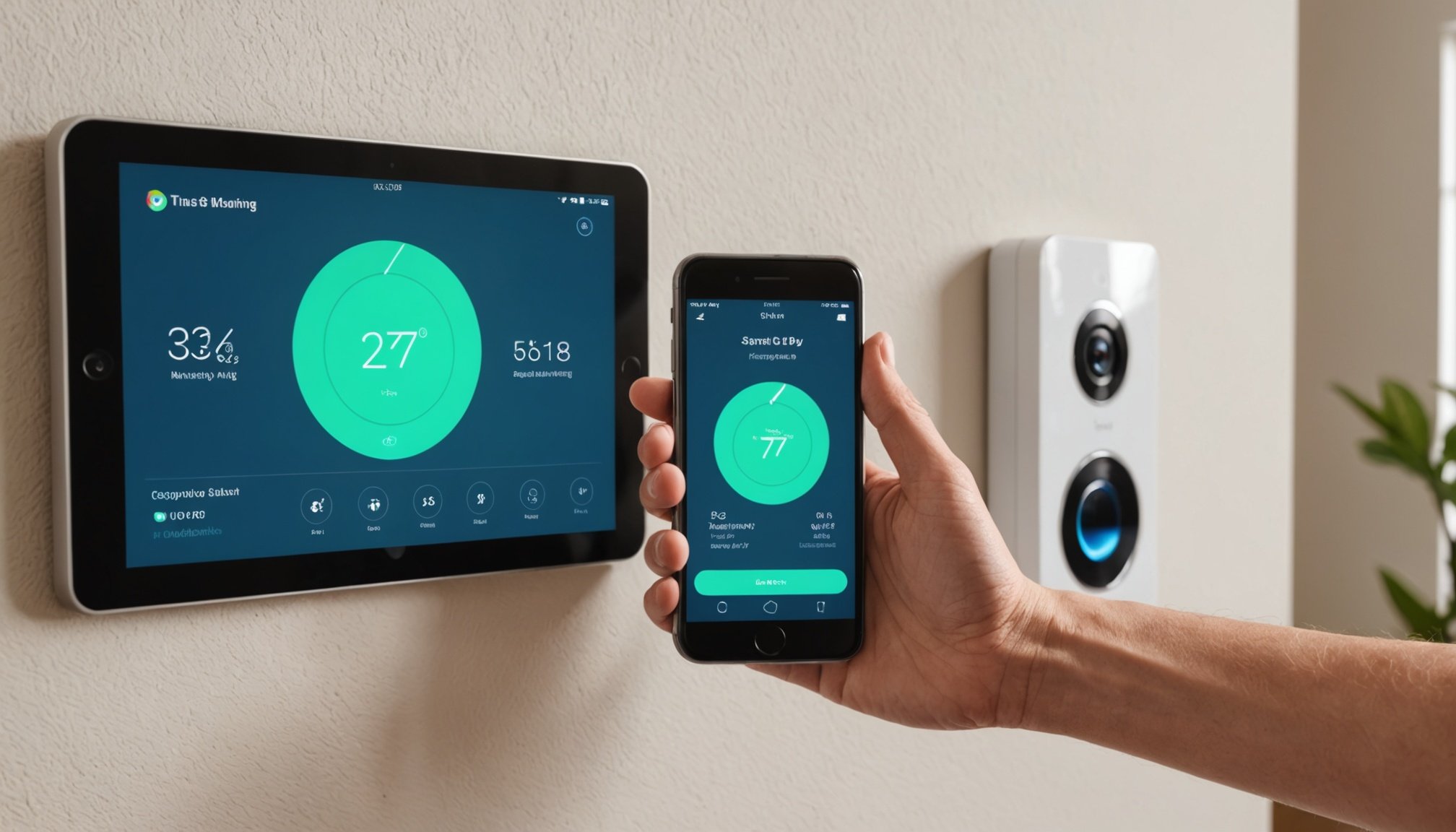Mastering Your Smartphone: A Guide to Crafting and Controlling Personalized Smart Home Routines
In the era of smart technology, your smartphone has become the central hub for managing your home, making it easier than ever to create a seamless and personalized living environment. This guide will walk you through the process of mastering your smartphone to control and automate your smart home devices, enhancing your daily life with convenience, efficiency, and security.
Understanding the Basics of Smart Home Ecosystems
Before diving into the specifics of controlling your smart home, it’s essential to understand the basics of how these ecosystems work. A smart home, also known as a connected or automated home, employs advanced technology to simplify and enhance daily household tasks. These devices are interconnected and accessible through a central point, such as your smartphone, tablet, or voice assistants like Google Assistant or Amazon Alexa.
Also read : Mastering Smart Home Lighting: Your Smartphone”s Guide to Enhanced Security Management
Key Components of a Smart Home Ecosystem
- Smart Devices: These include smart lights, thermostats, security systems, and appliances that can be controlled remotely.
- Central Control Hub: Apps like Apple Home, Google Home, and Samsung SmartThings serve as the central control point for managing all your smart devices.
- Voice Assistants: Voice assistants like Google Assistant, Amazon Alexa, and Siri enable voice control over your smart home devices.
- Automation Tools: These tools allow you to set up routines and automations that can simplify your daily tasks.
Essential Apps for Multi-Device Control
When it comes to managing your smart home, the right apps can make all the difference. Here are some of the most popular and effective apps for multi-device control:
Popular Smart Home Apps
- Apple Home: Integrates seamlessly with Apple devices, allowing you to control your smart home devices using your iPhone or iPad.
- Google Home: Compatible with a wide range of devices, Google Home offers robust automation features and voice control through Google Assistant.
- Samsung SmartThings: Known for its extensive compatibility with various smart devices, SmartThings provides a comprehensive platform for home automation.
Features to Look For
When selecting an app for your smart home, consider the following features:
In parallel : Unlocking Fitness: Top Smartphone Techniques for Effective Tracking
- Compatibility: Ensure the app supports a wide range of devices.
- User-Friendly Interface: The app should be easy to navigate and use.
- Robust Security Measures: Look for apps with strong security features to protect your data.
- Voice Command Support: The ability to control devices using voice commands is a significant advantage.
- Real-Time Notifications: Receive notifications when something goes wrong or when a device is activated.
- Custom Automation Rules: The ability to set up custom routines and automations is crucial for a personalized smart home experience.
Step-by-Step Setup for Device Integration
Integrating your devices into your smart home ecosystem is easier than you think. Here’s a step-by-step guide to help you get started:
General Setup Process
- Download the App: Start by downloading the setup app from the device manufacturer.
- Connect to Wi-Fi: Ensure your smartphone is connected to a stable Wi-Fi network.
- Enable Bluetooth and Location Services: These are often required for device configuration.
- Pair Devices: Follow the app prompts to connect each device to your network. For example, smart lights need to be in pairing mode, often indicated by a blinking light.
Detailed Walkthrough for Specific Devices
- Smart Lights:
- Open the app, select ‘Add Device’, and follow the prompts to connect the lights to your network.
- Ensure the lights are in pairing mode.
- Smart Speakers:
- Use the app to find your speaker.
- Once detected, enter your Wi-Fi credentials to establish a connection.
- Test the setup by playing audio through the speaker.
Enhancing Your Ecosystem with Automation
Automation is the heart of a smart home, allowing devices to work together seamlessly to simplify your daily life.
Automation Concepts for Multi-Device Ecosystems
- Simple Commands: Automate tasks like turning off lights when you leave home.
- Complex Routines: Set up routines involving multiple devices, such as a morning routine where smart lights gradually brighten, a smart speaker plays your favorite playlist, and the smart thermostat adjusts to your preferred temperature.
Examples of Automation Routines
Here are some practical examples of how automation can enhance your daily life:
- Morning Routine:
- Smart lights gradually brighten to simulate sunrise.
- A smart speaker plays your favorite playlist.
- The smart thermostat adjusts to your preferred temperature.
- Nighttime Routine:
- Lights turn off automatically when you leave the room.
- The thermostat adjusts to a more energy-efficient setting.
- Smart locks secure your home.
Mastering Smart Lighting Apps
Smart lighting is one of the most versatile and energy-efficient aspects of a smart home. Here’s how you can master your smart lighting app:
Necessary Equipment
- Smart Hubs and Bridges: These act as the central point for your smart lighting system, connecting your bulbs to your home network.
- Smart Bulbs: Choose bulbs that integrate easily with various smart home platforms, like the SmartThings bulb.
Key Features of Smart Lighting Apps
- Scheduling and Automation:
- Schedule your lights to turn on or off at specific times.
- Automate lights to mimic natural sunlight or turn off when you leave the house.
- Remote Access and Control:
- Control your lighting from anywhere using your smartphone.
- Ensure your home appears occupied even when you’re not there, enhancing security.
Settings for Optimal Use
- Custom Scenes and Routines:
- Design specific lighting setups for different activities, like reading or watching movies.
- Save these settings and activate them with a single tap.
- Energy Monitoring and Usage Reports:
- Understand your energy consumption through detailed reports.
- Optimize your lighting settings to reduce energy consumption and lower your utility bills.
Prioritizing Cost-Effective Upgrades
When upgrading your smart home, it’s crucial to prioritize cost-effective upgrades that maximize your return on investment.
Evaluating Your Needs
- Family Size and Home Layout: Consider how many people live in your home and the layout to determine the best smart devices for your needs.
- Energy Consumption: Focus on energy-saving devices that can lower your utility bills.
- Security Requirements: Invest in security upgrades like video surveillance and automated lighting to enhance safety.
Creating a Realistic Budget
- Initial Costs: Budget for the initial outlay for devices and installations.
- Ongoing Costs: Consider maintenance and future upgrades.
- Unforeseen Costs: Set aside 10% to 20% of your budget for unexpected expenses.
Selecting the Right Technologies
- Compatibility: Choose systems that easily integrate with your existing devices.
- Features and Costs: Research features, costs, and overall value to ensure they meet your specific needs.
- Ecosystem Integration: Focus on a single ecosystem like Google Home, Amazon Alexa, or Apple HomeKit for better system integration and smoother operation.
Table: Comparing Popular Smart Home Ecosystems
| Ecosystem | Compatibility | Voice Assistant | Automation Features | Security Measures |
|---|---|---|---|---|
| Apple Home | Apple Devices | Siri | Robust Automation | Strong Encryption |
| Google Home | Wide Range of Devices | Google Assistant | Advanced Automation | Multi-Layer Security |
| Samsung SmartThings | Extensive Compatibility | Bixby | Custom Automation Rules | Regular Updates |
Practical Insights and Actionable Advice
Start Small
Begin with basic smart devices like smart lights or a smart thermostat. As you become more comfortable, you can expand your ecosystem.
Use Voice Assistants
Voice assistants like Google Assistant or Amazon Alexa can significantly enhance your user experience by allowing voice control over your smart devices.
Automate Routines
Set up routines that automate tasks, such as turning off lights when you leave home or adjusting the thermostat when you go to bed.
Monitor Energy Consumption
Use smart lighting apps and other energy-monitoring tools to understand your energy consumption and make informed decisions to reduce your utility bills.
Quotes and Real-World Examples
- “Smart home technology allows you to control your home the way you want to,” says TSP Smart Spaces. This personalized control is what makes smart homes so appealing.
- A homeowner might use a smart home app to adjust the thermostat and lighting while away, creating the illusion of occupancy. This not only enhances security but also saves energy.
Mastering your smartphone to control and automate your smart home is a journey that can significantly enhance your daily life. By choosing the right apps, integrating your devices seamlessly, and prioritizing automation and cost-effective upgrades, you can create a home environment that is not only convenient but also energy-efficient and secure.
Final Tips
- Experiment with Different Settings: Don’t be afraid to try out different settings and routines to find what works best for you.
- Stay Updated: Regularly update your apps and devices to ensure you have the latest features and security patches.
- Consider User Experience: Focus on creating a user experience that is intuitive and easy to use, making your smart home a joy to live in.
By following these guidelines and tips, you can transform your home into a smart, efficient, and personalized haven that adapts to your lifestyle, making every moment at home more enjoyable and convenient.










